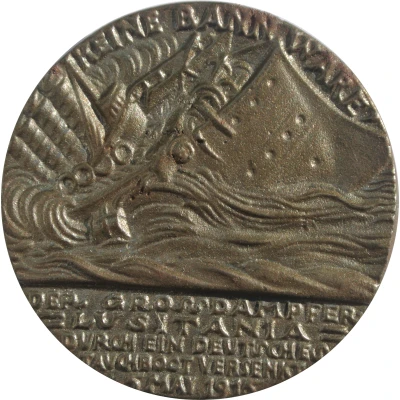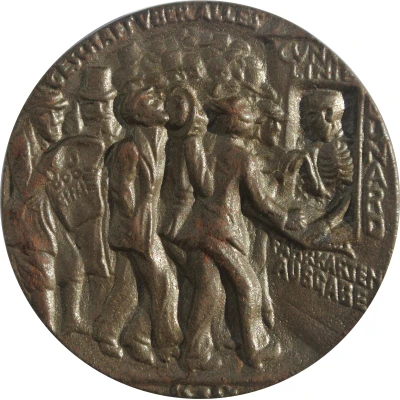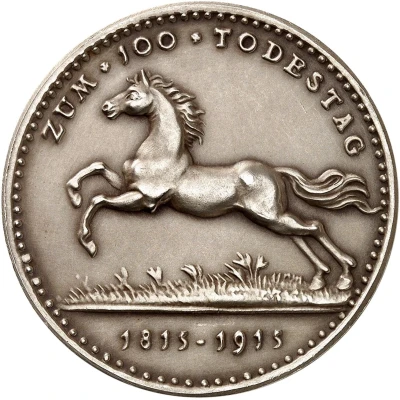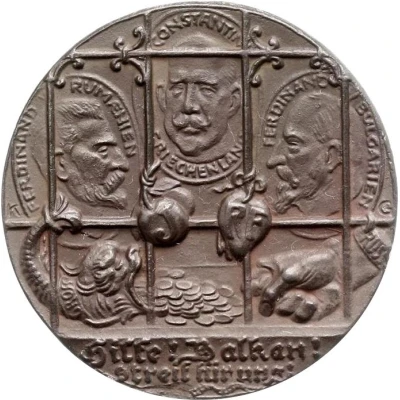


© sam64
The Sinking of the S. S. Lusitania
1915 year| Iron | 70.10 g | 55 mm |
| Location | Germany (1871-1948) |
|---|---|
| Emperor | William II (1888-1918) |
| Type | Advertising medallions › Satirical medals |
| Year | 1915 |
| Composition | Iron |
| Weight | 70.10 g |
| Diameter | 55 mm |
| Thickness | 4 mm |
| Shape | Round |
| Technique | Milled |
| Orientation | Medal alignment ↑↑ |
| Demonetized | Yes |
| Updated | 2024-11-14 |
| Numista | N#114297 |
|---|---|
| Rarity index | 78% |
Reverse
Skeleton (as Death) standing left within ticket booth, queue of passangers to the left.
Script: Latin
Lettering:
GESCHAFT VBER ALLES
KOG
Translation: business above all
Engraver: Karl Goetz
Edge
Plain
Comment
Entering passenger service with the Cunard Line in 1907, the Lusitania continued the line’s heavily-traveled service between Liverpool and New York City. After the outbreak of World War I, however, relations between Great Britain and Germany diminished, as the two became enemies within the conflict. This lead to Germany’s declaration of submarine warfare upon the British Isles and a ‘no-sail zone’ for any vessel flying the British flag. On 7 May 1915, the Lusitania was identified by a German U-Boat, torpedoed, and sank in 18 minutes, killing over 60% of the passengers. The vessel went down 11 miles off the Old Head of Kinsale, Ireland, and instantly became an iconic symbol for American involvement into the now global conflict.Case of the United Kingdom restrike
German type a and d have a diameter of 57mm whereas the British medals have a diameter of 55mm.
An American copy from the time also exists, a Japanese copy has been made in the 70's and other modern museum reproductions and modern couterfeits also exist.
In total between 250.000 and 300.000 of the british restrike medals have been made.



